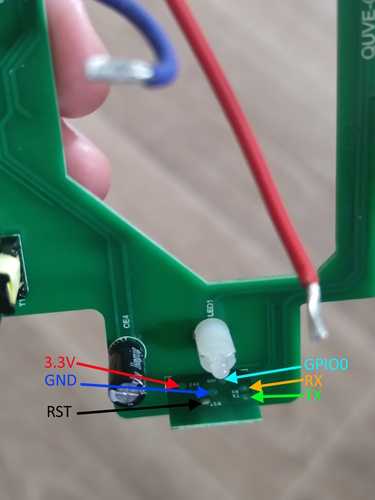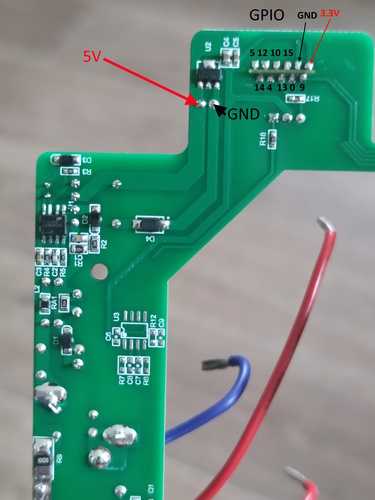devices.esphome.io
XtendLan chytrá venkovní zásuvka/ IP66/ dvojitá
XtendLan chytrá venkovní zásuvka/ IP66/ dvojitá
Device Type: plugElectrical Standard: euBoard: esp8266
Manufacturer

The LEDs for active sockets are not controlled separately, they are directly connected to the same pin as the relay.
The RX and TX pins are missing on the main board, so for flashing, the testpad on the ESP board must be used.
There are some unused GPIO pins exported to the main board. More information can be found in the picture.
Pinout picture


GPIO Pinout
| Pin | Function |
|---|---|
| GPIO0 | Button 1 |
| GPIO9 | Button 2 |
| GPIO13 | Status LED |
| GPIO5 | Relay 1 |
| GPIO12 | Relay 2 |
Basic Configuration
substitutions: name: socket friendly_name: "Socket 1" location: Anywhere
esphome: name: ${name} friendly_name: socket
esp8266: board: esp8285
# Enable logginglogger:
# Enable Home Assistant APIapi:
ota: password: "[redacted]"
web_server: port: 80
wifi: ssid: !secret wifi_ssid password: !secret wifi_password
# Enable fallback hotspot (captive portal) in case wifi connection fails ap: ssid: ${friendly_name} Hotspot password: !secret ap_password
captive_portal:
binary_sensor: - platform: gpio pin: number: GPIO0 mode: input: true pullup: true inverted: true name: ${friendly_name} Button 1 on_press: - switch.toggle: relay1 - platform: gpio pin: number: GPIO9 mode: input: true pullup: true inverted: true name: ${friendly_name} Button 2 on_press: - switch.toggle: relay2 - platform: status name: ${friendly_name} Status
switch: - platform: gpio name: ${friendly_name} rele 1 pin: GPIO12 id: relay1 - platform: gpio name: ${friendly_name} rele 2 pin: GPIO5 id: relay2
status_led: pin: number: GPIO13 inverted: yes
sensor: # WiFi signals strength sensor - platform: wifi_signal name: ${friendly_name} WiFi Signal Sensor update_interval: 60s
text_sensor: # IP address of device. Not really needed for HA (as HA already knows it), but for showing on the display during startup. The startup screen will leave on if no instance connects to the API. - platform: wifi_info ip_address: name: ${friendly_name} IP address id: ip_address